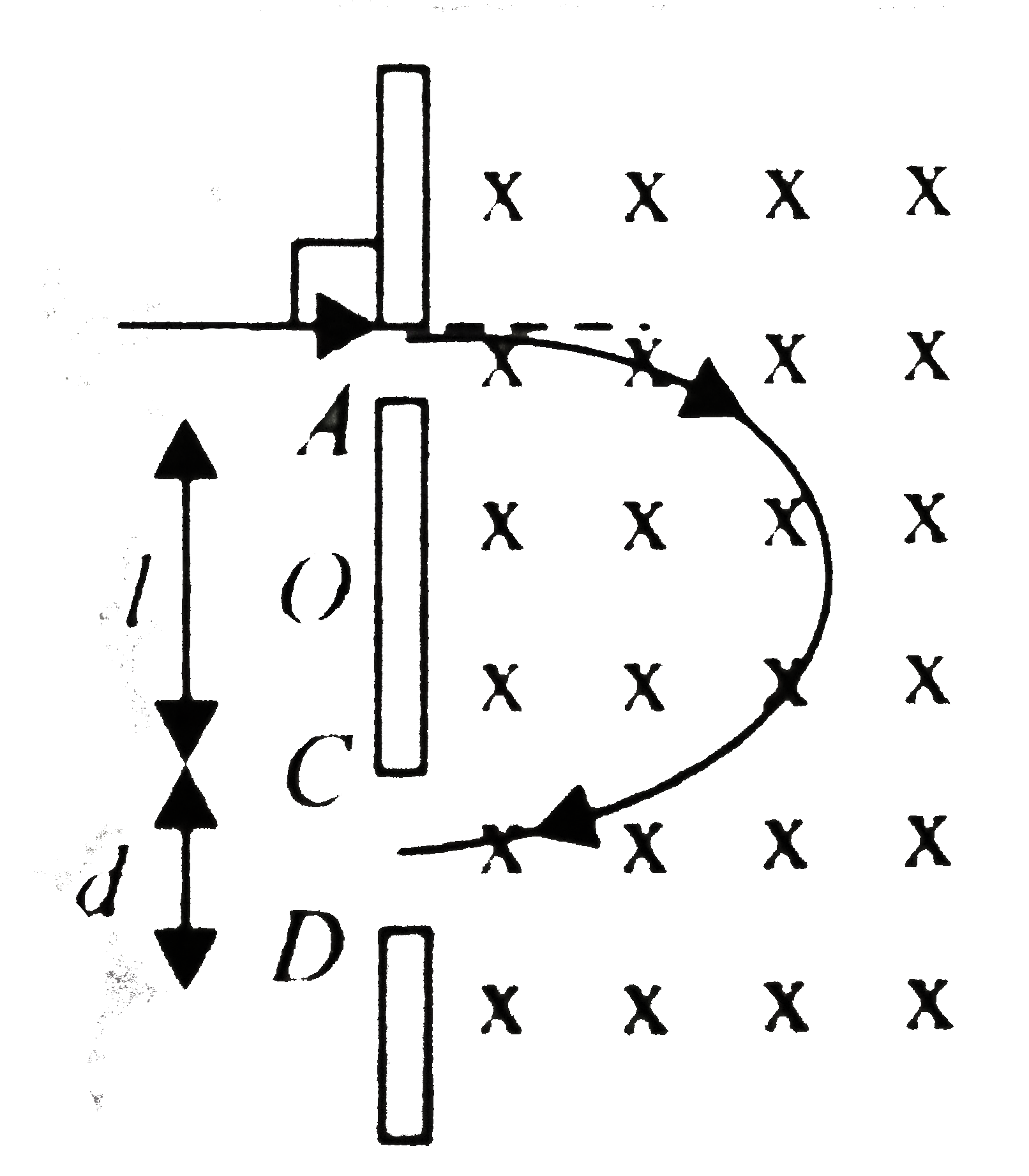A beam of the charged particles is passed through a magnetic field. The work done on the beam by the field is
zero
independent on the speed of the beam
dependent on the deflection of the beam
dependent on the magnetic induction →B
The correct Answer is:A
To solve the problem of finding the work done on a beam of charged particles passing through a magnetic field, we can follow these steps:
1. Understanding Work Done:
The work done W by a force is defined as:
W=→F⋅→S
where →F is the force acting on the charged particles and →S is the displacement of the particles.
2. Magnetic Force on Charged Particles:
The magnetic force →F on a charged particle moving in a magnetic field is given by the Lorentz force equation:
→F=q(→v×→B)
where q is the charge of the particle, →v is the velocity vector of the particle, and →B is the magnetic field vector.
3. Direction of Force:
The direction of the magnetic force is perpendicular to both the velocity of the charged particles and the magnetic field. This means that the force does not do any work on the charged particles because work is only done when the force has a component in the direction of displacement.
4. Calculating Work Done:
Since the magnetic force is perpendicular to the displacement, the angle θ between the force and the displacement is 90∘. Therefore, we can express the work done as:
W=F⋅S⋅cos(90∘)
Since cos(90∘)=0, we have:
W=F⋅S⋅0=0
5. Conclusion:
The work done on the beam of charged particles by the magnetic field is zero.
Final Answer:
The work done on the beam by the magnetic field is 0.
---
The work done W by a force is defined as:
W=→F⋅→S
where →F is the force acting on the charged particles and →S is the displacement of the particles.
The magnetic force →F on a charged particle moving in a magnetic field is given by the Lorentz force equation:
→F=q(→v×→B)
where q is the charge of the particle, →v is the velocity vector of the particle, and →B is the magnetic field vector.
The direction of the magnetic force is perpendicular to both the velocity of the charged particles and the magnetic field. This means that the force does not do any work on the charged particles because work is only done when the force has a component in the direction of displacement.
Since the magnetic force is perpendicular to the displacement, the angle θ between the force and the displacement is 90∘. Therefore, we can express the work done as:
W=F⋅S⋅cos(90∘)
Since cos(90∘)=0, we have:
W=F⋅S⋅0=0
The work done on the beam of charged particles by the magnetic field is zero.
The work done on the beam by the magnetic field is 0.
Topper's Solved these Questions
- BOOK - AAKASH SERIESCHAPTER - MOVING CHARGES AND MAGNETISMEXERCISE - EXERCISE-IB71videos
MOVING CHARGES AND MAGNETISM
- BOOK - AAKASH SERIESCHAPTER - MOVING CHARGES AND MAGNETISMEXERCISE - EXERCISE-II79videos
MOVING CHARGES AND MAGNETISM
- BOOK - AAKASH SERIESCHAPTER - MOVING CHARGES AND MAGNETISMEXERCISE - EXERCISE-III49videos
MOVING CHARGES AND MAGNETISM
- BOOK - AAKASH SERIESCHAPTER - MOTION IN A STRAIGHT LINE EXERCISE - very Short answer type question15videos
MOTION IN A STRAIGHT LINE
- BOOK - AAKASH SERIESCHAPTER - NUCLEAR PHYSICSEXERCISE - ADDITIONAL PRACTICE PRACTICE SHEET (ADVANCED) Integer Type Questions3videos
NUCLEAR PHYSICS
Similar Questions
A charged particle is moved along a magnetic field line. The magnetic force on the particle is
View SolutionPositively charged particles are projected into a magnetic field. If the direction of the magnetic field is along the direction of motion of the charged particles, the particles get
View Solution
Knowledge Check
- Question 1 - Select One
A charged particle is moving on circular path with velocityv in a uniform magnetic field B, if the velocity of the charged particle is doubled and strength of magnetic field is halved, then radius becomes
A8 timesB4 timesC2 timesD16 times
A charged particle moves through a magnetic field perpendicular to its direction. Then
View SolutionWhen a charged particle enters a uniform magnetic field its kinetic energy
View SolutionA beam of equally charged particles after being accelerated through a voltage V enters into a magnetic field B as shown in Fig. 1.31. It is found that all the particles hit the plate between C and D. Find the ratio between the masses of the heaviest and lightest particles of the beam.
 View Solution
View SolutionA magnet of magnetic moment M is rotated through 360∘ in a magnetic field H, the work done will be
View SolutionIf a charged particle enters perpendicular in the uniform magnetic field then
View SolutionA beam of protons is moving horizontally towards you. As it approaches, it passes through a magnetic field directed downward. The beam deflects-
 View Solution
View SolutionA charge is moving through a magnetic field. The force acting on the charge is maximum when the angle between the velocity of charge and the magnetic field is _______
View Solution

